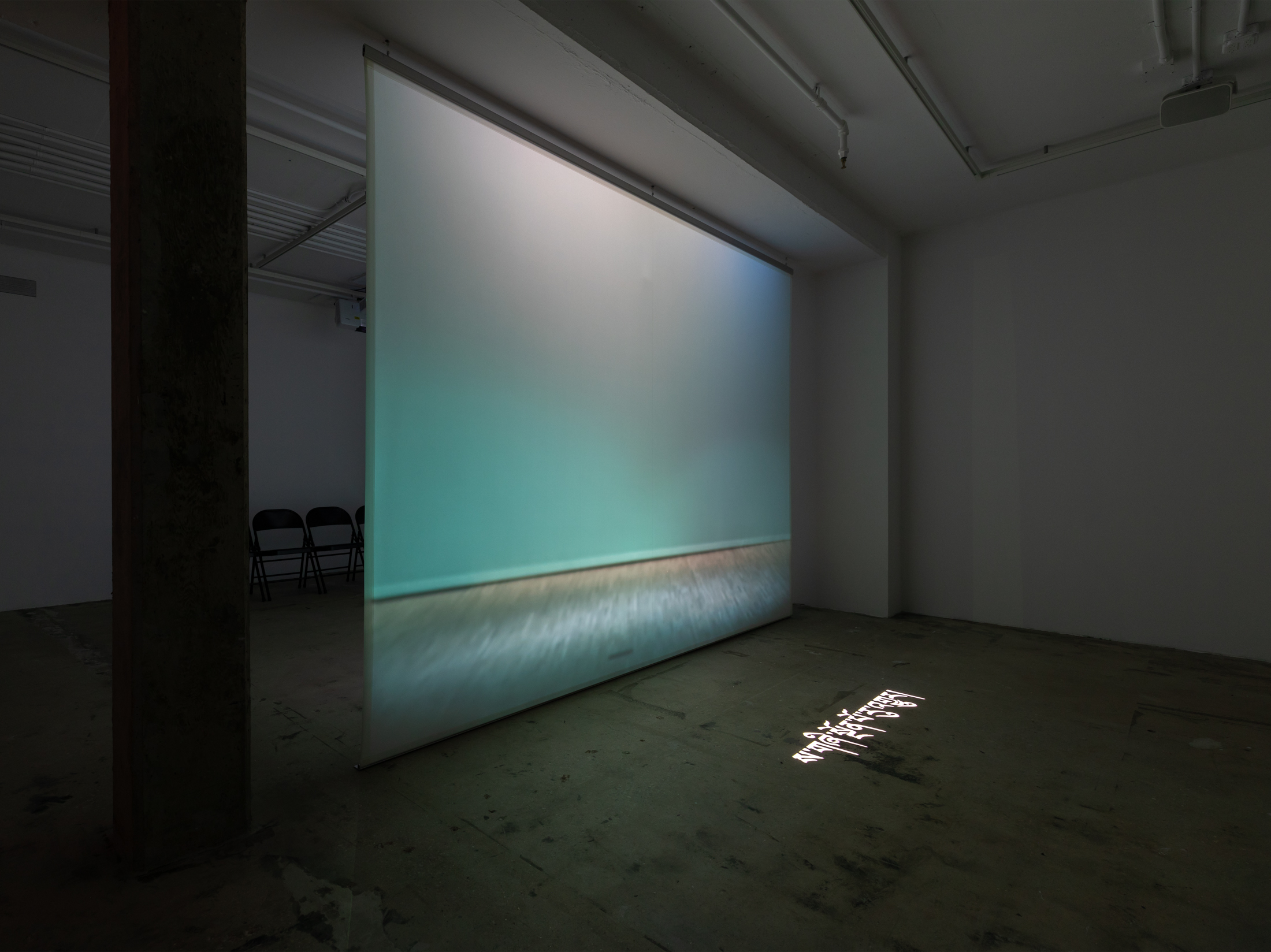Shen Xin:ས་གཞི་སྔོན་པོ་འགྱུར། (The Earth Turned Green) | Artforum
Jul 19 2022

The namesake centerpiece of the Chengdu, China–born Shen Xin’s solo exhibition here, ས་གཞི་སྔོན་པོ་འགྱུར། (The Earth Turned Green), 2022, is a massive three-channel video and sound installation. The work, which grew out of the artist’s stumbles in learning Tibetan, comprises a floor-to-ceiling screen featuring imagery projected on both sides, subtitled in English and Tibetan. This surface divides the gallery space evenly in two, metaphorically producing the “gulf” that frequently exists between different languages. For the piece, Shen worked with a technician to create a lighting scheme that mimicked the passage of a day within each of the four seasons. The artist wrote down their feelings in response to the scheme in Mandarin, and then had this text translated by Ji Ta Zong, their language teacher, into Tibetan. The resulting document functioned as a pedagogical tool for Shen’s language lessons with the tutor.
In the videos, hazy blobs of color intermingle to produce a kind of abstract grammar—reminiscent of Mark Rothko’s formalism—suggesting that learning is a lot like calibrating one’s vision. A soundtrack of conversations between Shen and Ji, in both Tibetan and Mandarin, accompanies the piece, but what they say is difficult to make out. This garbledness seems to emulate what it feels like to try and master a new language as one tries to overcome the various roadblocks—intellectual, cultural, etc.—that crop up during the process.
In discussing the notion of “linguistic identities,” Peter Hessler, an American journalist and the author of several books on China and Egypt, writes that “the more languages you know, the more you appreciate how hard it is to label another person, because each mind contains its own unique collection of words.” In their piece, Shen nods to Hessler’s concept, as the work suggests that possessing a sense of openness or vulnerability when facing the unknown—a language, a culture, etc.—might mitigate prejudice and lead to deeper self-reflection.
For instance, when Ji describes fruits as blocky forms on a tree, Shen is surprised; when Shen wonders why the root of the word night in Tibetan is related to motherhood, Ji confesses that she had never thought about it in this way. Through their courageous acts of not knowing, the duo manages to share in each other’s creativity and imagination, producing a state of profound mutual understanding between teacher and student. Indeed, by “using what we see and feel as a field of knowledge production,” Shen states, “coexisting with multitude is feasible.”
by Qianfan Gu
